Abstract
Twenty-nine healthy volunteers participated in an experiment lasting for 8 weeks: Phase I (2 weeks)--pre-treatment control period; Phase II (4 weeks)--medication with either ciclazindol hydrochloride (50 mg twice daily), or desipramine hydrochloride (50 mg twice daily) or lactose placebo (twice daily) administered in a single-blind fashion; Phase II (2 weeks)--recovery. Experimental sessions took place twice weekly for the photographic assessment of resting pupil diameter, and for the assessment of one of the following pupillary responses: mydriatic response to methoxamine, mydriatic response to tyramine, miotic response to pilocarpine. Resting pupil diameter increased during medication with either ciclazindol or desipramine. Methoxamine-evoked mydriasis and tyramine-evoked mydriasis were antagonized by both ciclazindol and desipramine. Pilocarpine-evoked miosis was potentiated by both ciclazindol and desipramine. The steady-state plasma levels (mean +/- s.e. mean) of the antidepressants were: ciclazindol: 5.90 +/- 0.74 microM; desipramine: 0.60 +/- 0.17 microM. The antagonism of methoxamine-evoked mydriasis is likely to reflect the blockade of postsynaptic alpha 1-adrenoceptors in the iris by the antidepressants, whereas the antagonism of tyramine-evoked mydriasis may reflect both the blockade of uptake of tyramine into presynaptic adrenergic terminals and the blockade of postsynaptic alpha-adrenoceptors. There is no immediate explanation for the potentiation of pilocarpine-evoked miosis by the two antidepressants.
Full text
PDF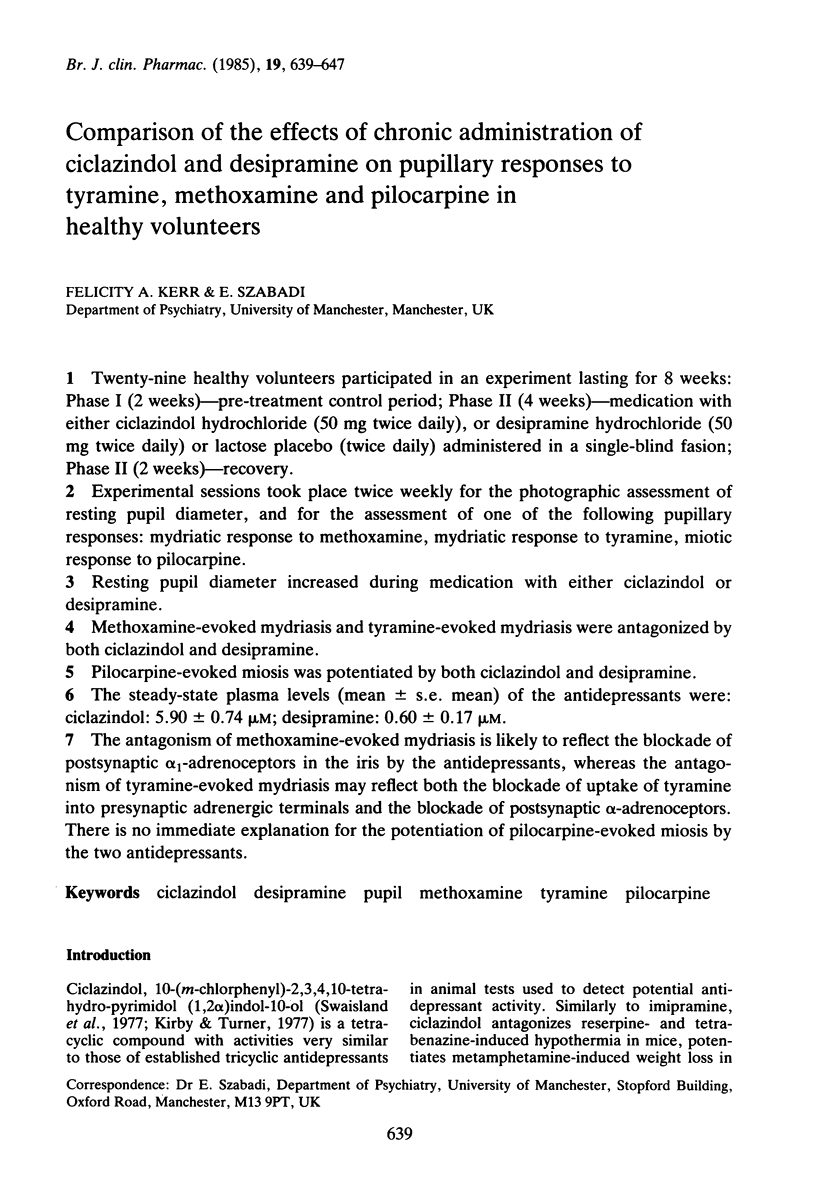
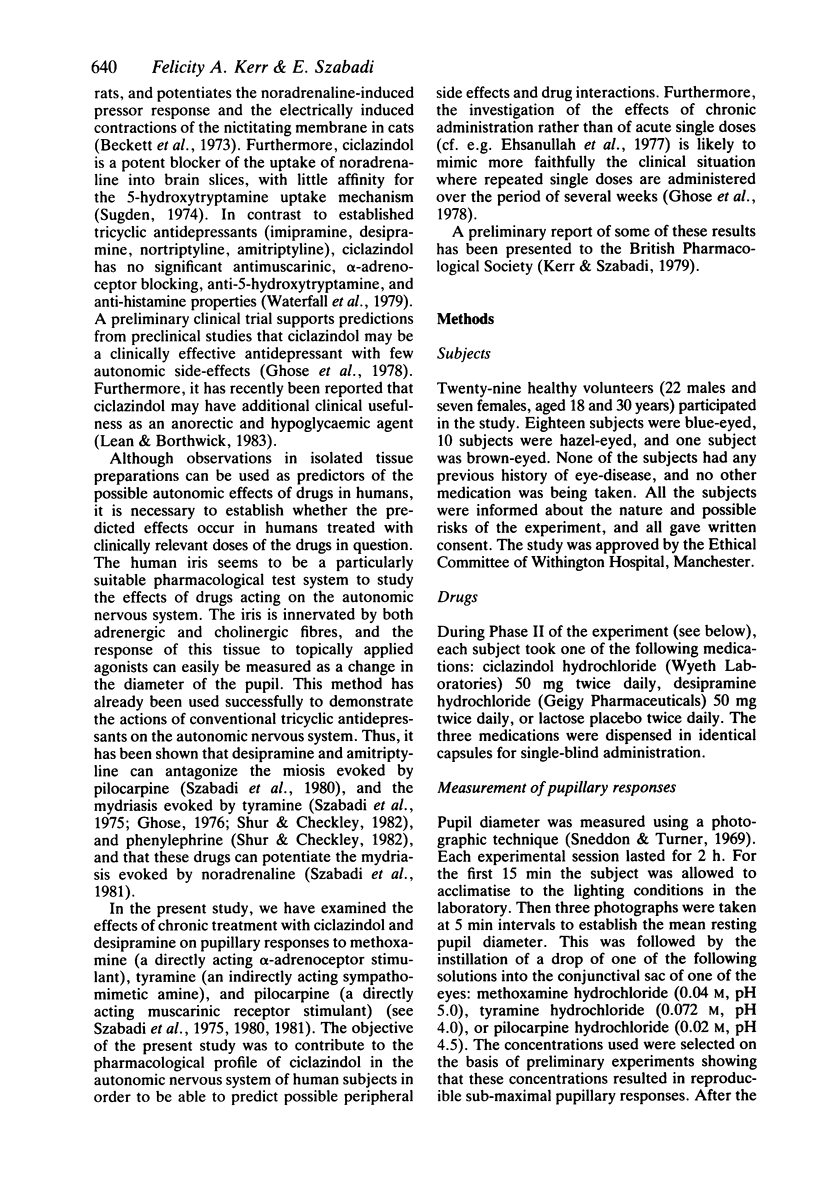
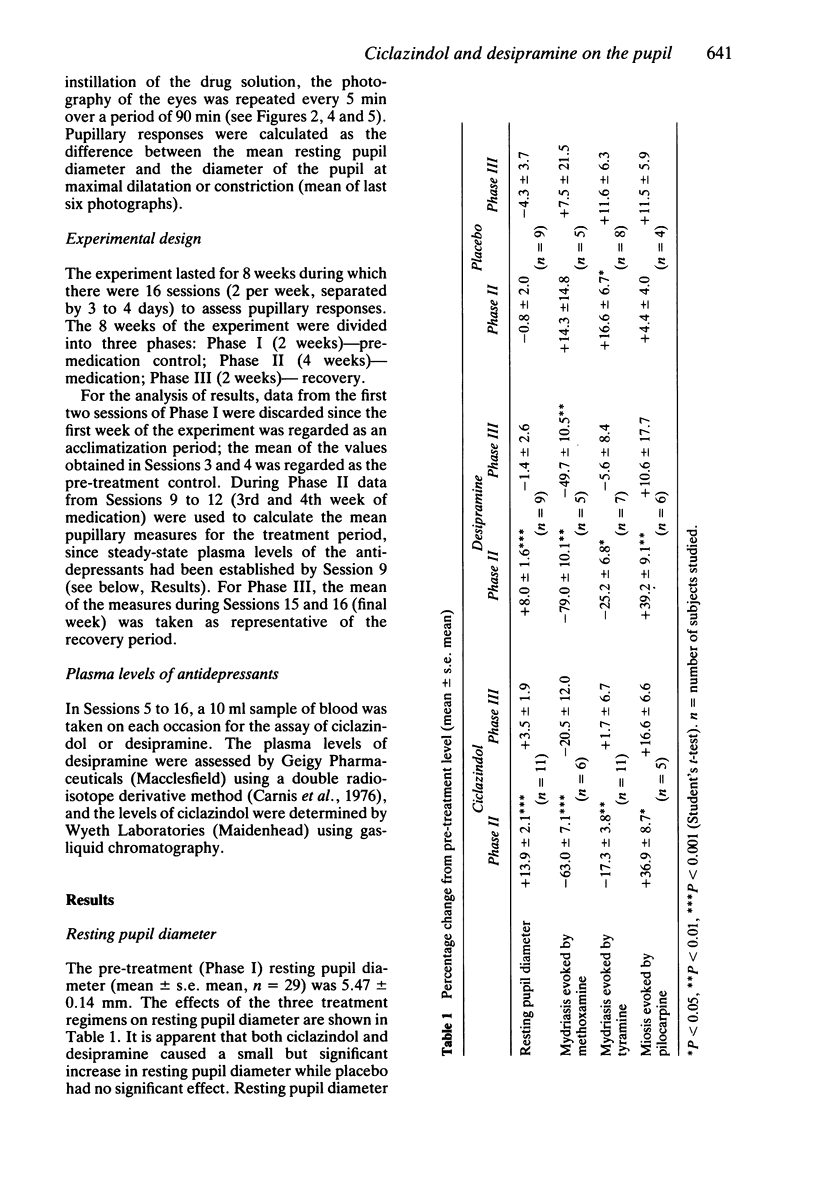
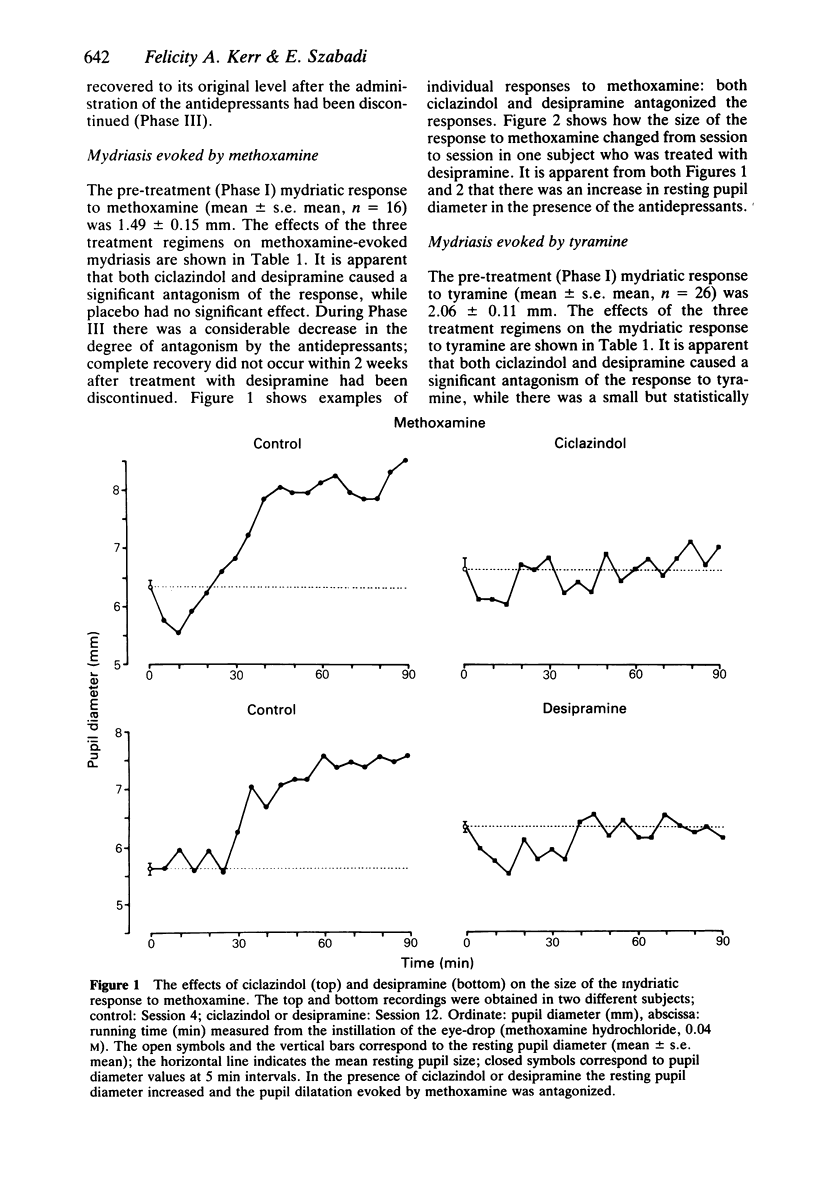
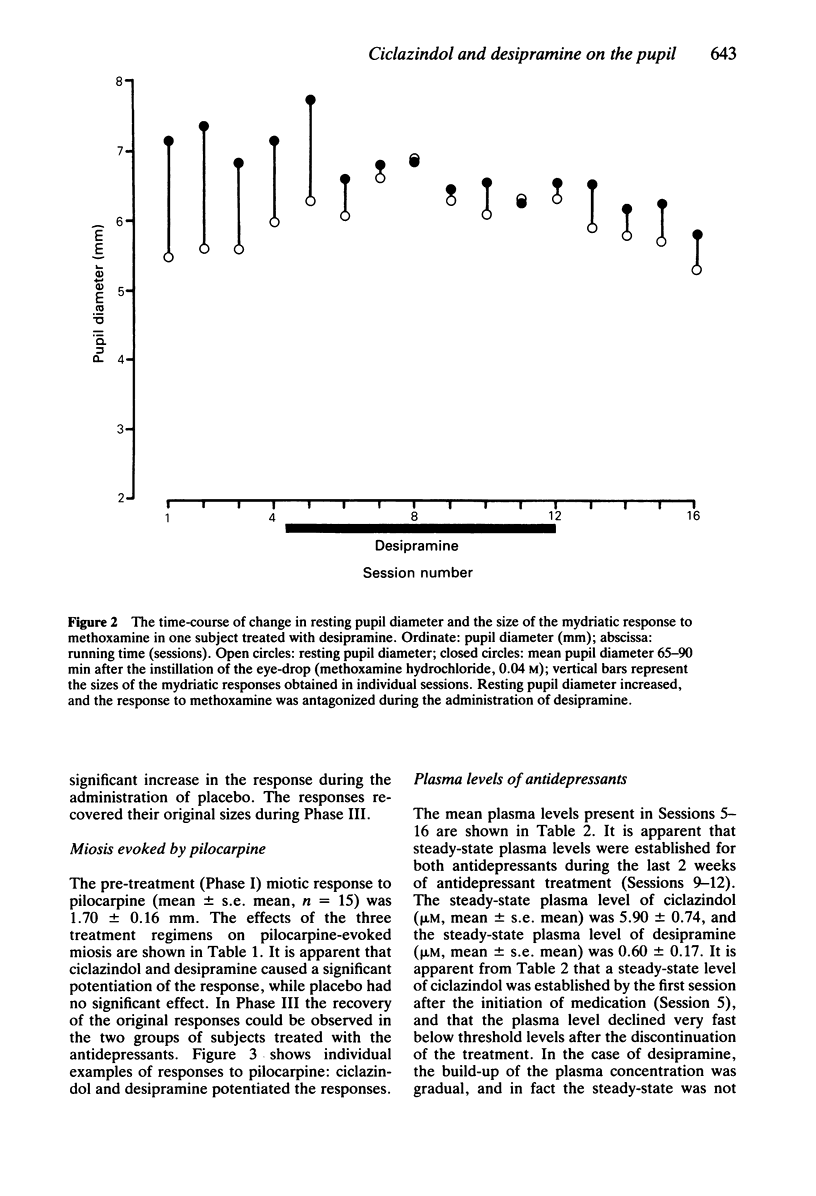
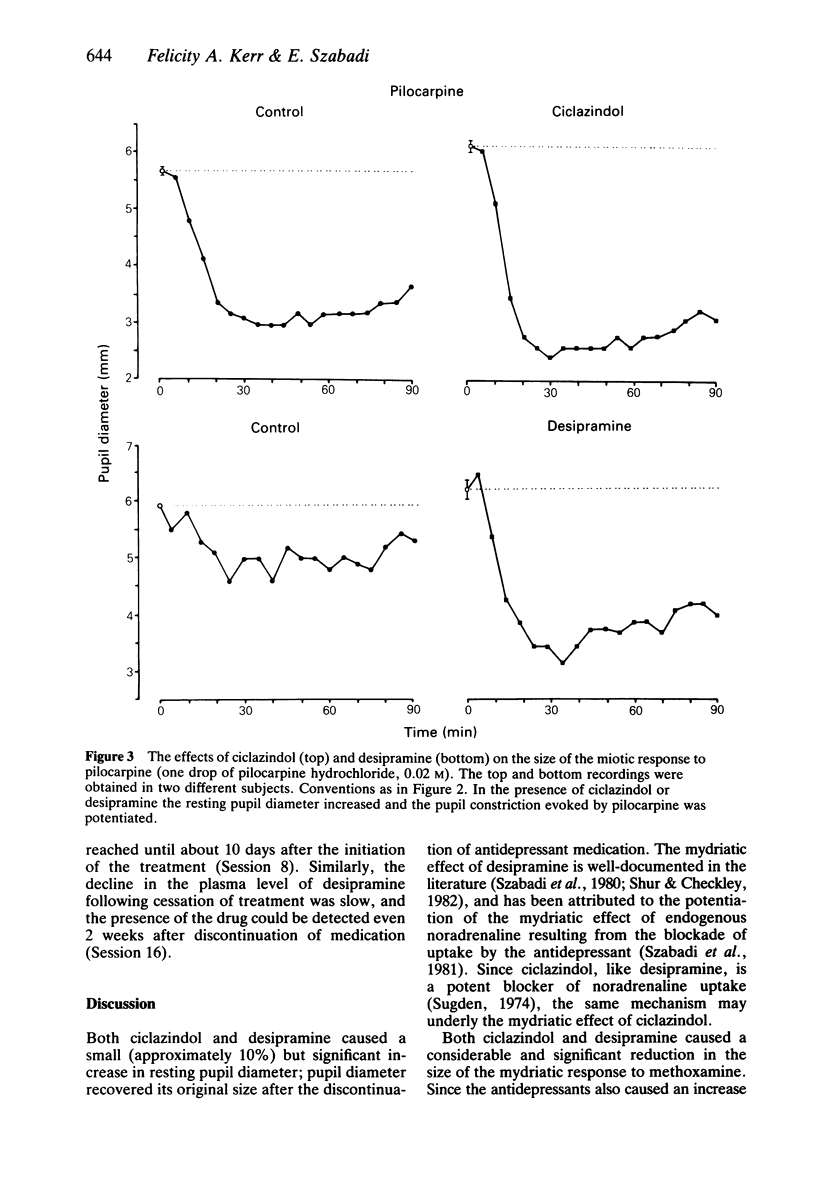
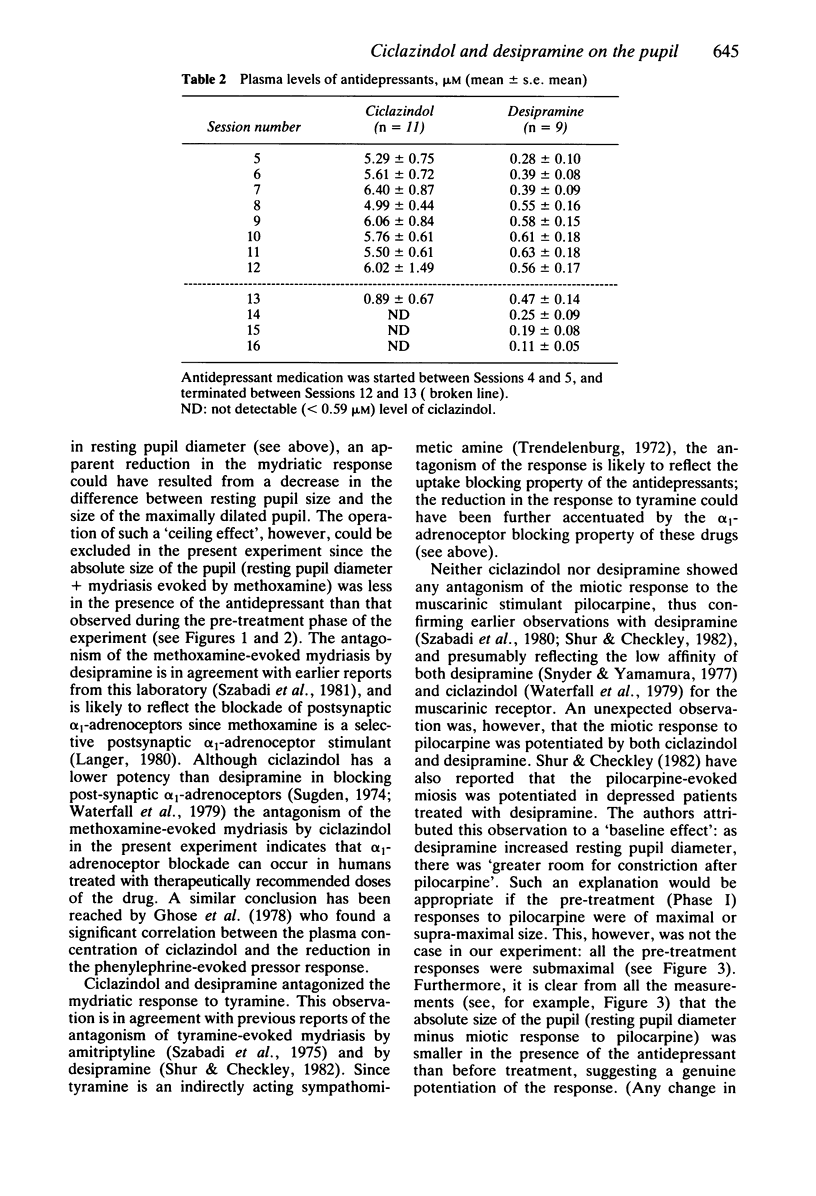
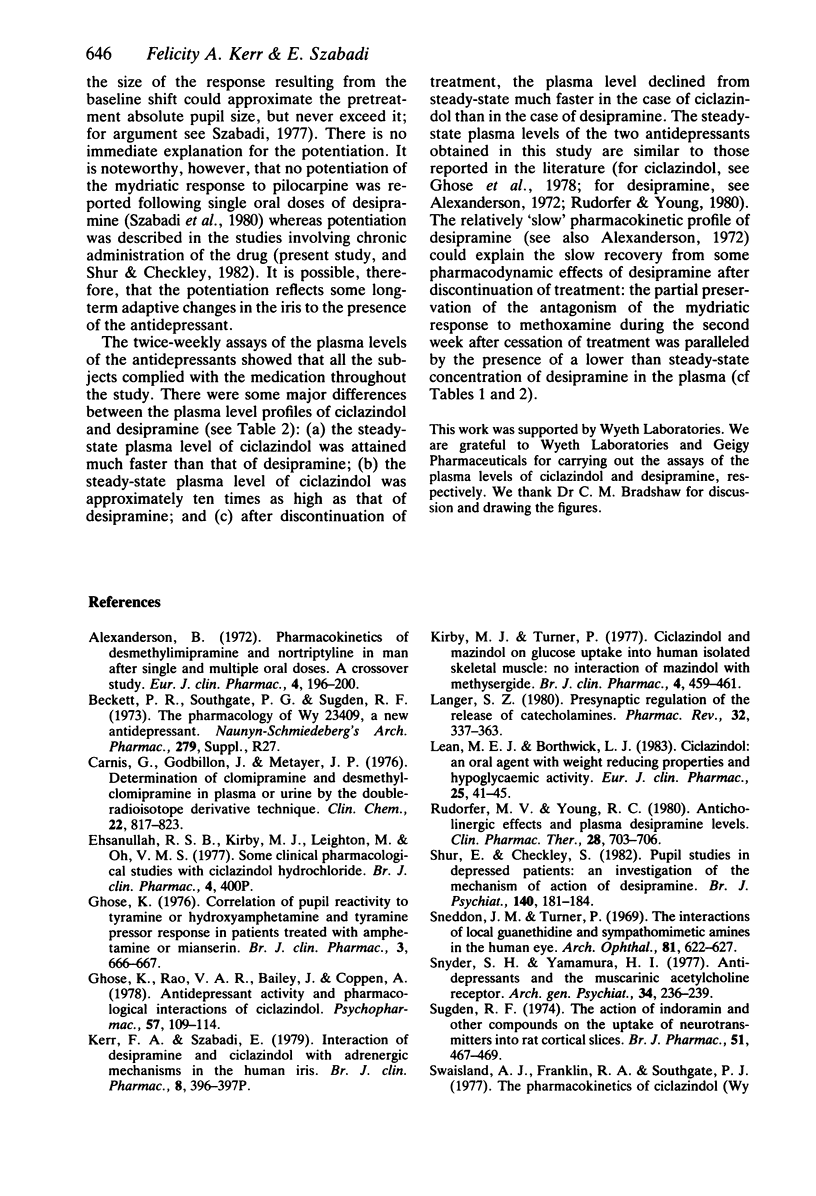
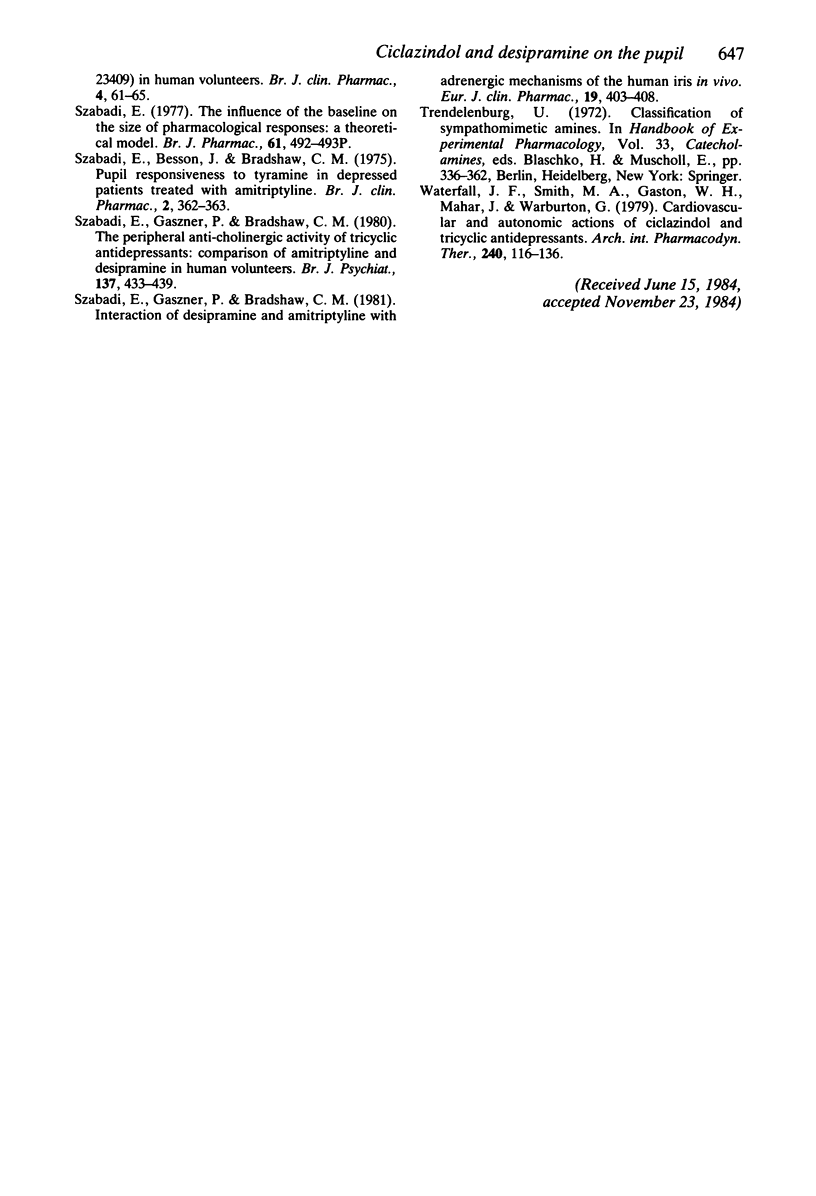
Selected References
These references are in PubMed. This may not be the complete list of references from this article.
- Carnis G., Godbillon J., Metayer J. P. Determination of clomipramine and desmethyl-clomipramine in plasma or urine by the double-radioisotope derivative technique. Clin Chem. 1976 Jun;22(6):817–823. [PubMed] [Google Scholar]
- Ehsanullah R. S., Kirby M. J., Leighton M., Oh V. M. Some clinical pharmacological studies with ciclazindol hydrochloride [proceedings]. Br J Clin Pharmacol. 1977 Jun;4(3):400P–400P. [PubMed] [Google Scholar]
- Ghose K., Rama Rao V. A., Bailey J., Coppen A. Antidepressant activity and pharmacological interactions of ciclazindol. Psychopharmacology (Berl) 1978 Apr 14;57(1):109–114. doi: 10.1007/BF00426966. [DOI] [PubMed] [Google Scholar]
- Kerr F. A., Szabadi E. Interaction of desipramine and ciclazindol with adrenergic mechanisms in the human iris [proceedings]. Br J Clin Pharmacol. 1979 Oct;8(4):396P–397P. [PubMed] [Google Scholar]
- Kirby M. J., Turner P. Ciclazindol and mazindol on glucose uptake into human isolated skeletal muscle: no interaction of mazindol with methysergide. Br J Clin Pharmacol. 1977 Aug;4(4):459–461. doi: 10.1111/j.1365-2125.1977.tb00762.x. [DOI] [PMC free article] [PubMed] [Google Scholar]
- Langer S. Z. Presynaptic regulation of the release of catecholamines. Pharmacol Rev. 1980 Dec;32(4):337–362. [PubMed] [Google Scholar]
- Lean M. E., Borthwick L. J. Ciclazindol: an oral agent with weight reducing properties and hypoglycaemic activity. Eur J Clin Pharmacol. 1983;25(1):41–45. doi: 10.1007/BF00544012. [DOI] [PubMed] [Google Scholar]
- Rudorfer M. V., Young R. C. Anticholinergic effects and plasma desipramine levels. Clin Pharmacol Ther. 1980 Nov;28(5):703–706. doi: 10.1038/clpt.1980.224. [DOI] [PubMed] [Google Scholar]
- Shur E., Checkley S. Pupil studies in depressed patients: an investigation of the mechanism of action of desipramine. Br J Psychiatry. 1982 Feb;140:181–184. doi: 10.1192/bjp.140.2.181. [DOI] [PubMed] [Google Scholar]
- Sneddon J. M., Turner P. The interactions of local guanethidine and sympathomimetic amines in the human eye. Arch Ophthalmol. 1969 May;81(5):622–627. doi: 10.1001/archopht.1969.00990010624005. [DOI] [PubMed] [Google Scholar]
- Snyder S. H., Yamamura H. I. Antidepressants and the muscarinic acetylcholine receptor. Arch Gen Psychiatry. 1977 Feb;34(2):236–239. doi: 10.1001/archpsyc.1977.01770140126014. [DOI] [PubMed] [Google Scholar]
- Sugden R. F. The action of indoramin and other compounds on the uptake of neurotransmitters into rat cortical slices. Br J Pharmacol. 1974 Jul;51(3):467–469. doi: 10.1111/j.1476-5381.1974.tb10687.x. [DOI] [PMC free article] [PubMed] [Google Scholar]
- Swaisland A. J., Franklin R. A., Southgate P. J., Coleman A. J. The pharmacokinetics of ciclazindol (Wy 23409) in human volunteers. Br J Clin Pharmacol. 1977 Feb;4(1):61–65. doi: 10.1111/j.1365-2125.1977.tb00668.x. [DOI] [PMC free article] [PubMed] [Google Scholar]
- Szabadi E., Besson J., Bradshaw C. M. Pupil responsiveness to tyramine in depressed patients treated with amitriptyline. Br J Clin Pharmacol. 1975 Aug;2(4):362–363. doi: 10.1111/j.1365-2125.1975.tb02787.x. [DOI] [PMC free article] [PubMed] [Google Scholar]
- Szabadi E., Gaszner P., Bradshaw C. M. Interaction of desipramine and amitriptyline with adrenergic mechanisms in the human iris in vivo. Eur J Clin Pharmacol. 1981;19(6):403–408. doi: 10.1007/BF00548582. [DOI] [PubMed] [Google Scholar]
- Szabadi E., Gaszner P., Bradshaw C. M. The peripheral anticholinergic activity of tricyclic antidepressants: comparison of amitriptyline and desipramine in human volunteers. Br J Psychiatry. 1980 Nov;137:433–439. doi: 10.1192/bjp.137.5.433. [DOI] [PubMed] [Google Scholar]
- Szabadi E. The influence of the baseline on the size of pharmacological responses: a theoretical model [proceedings]. Br J Pharmacol. 1977 Nov;61(3):492P–493P. [PMC free article] [PubMed] [Google Scholar]
- Waterfall J. F., Smith M. A., Gaston W. H., Maher J., Warburton G. Cardiovascular and autonomic actions of ciclazindol and tricyclic antidepressants. Arch Int Pharmacodyn Ther. 1979 Jul;240(1):116–136. [PubMed] [Google Scholar]


